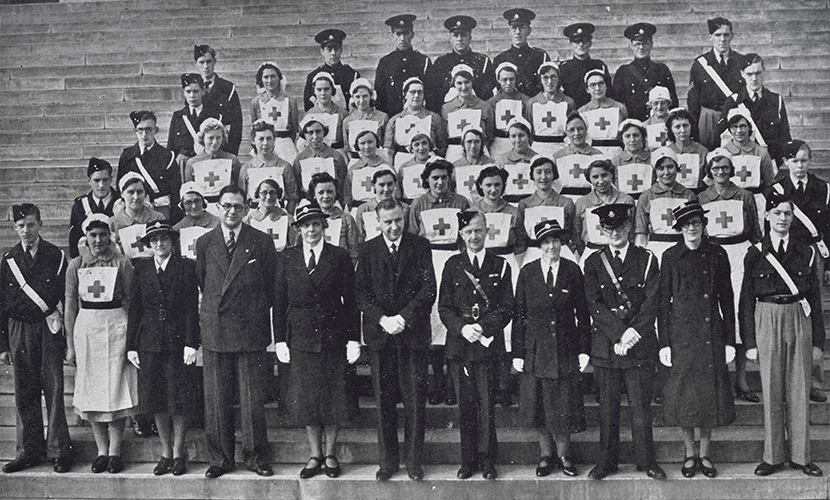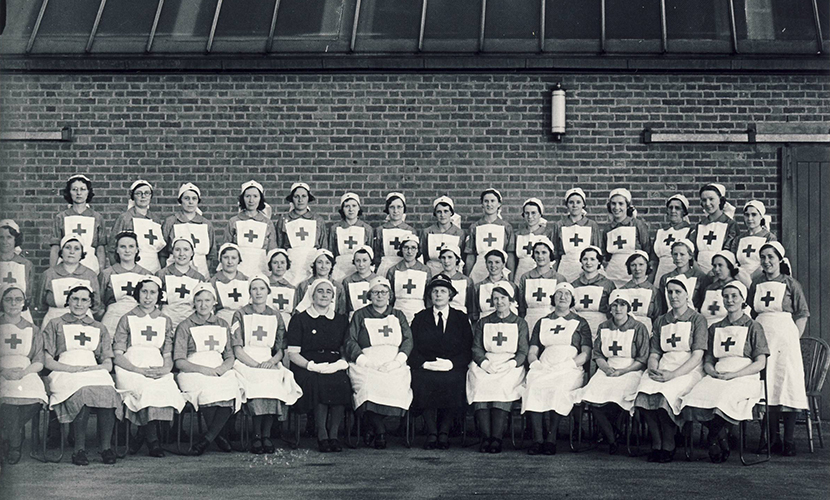‘Members of the Detachment rendered very great services in the district throughout the war, and especially during the blitz period. They helped in hospitals and first-aid posts and have continued to help in this way ever since.’
- W. R. Bray, ‘The Country Should be Grateful’, 1947.
The British Red Cross Society (BRCS) was founded in 1870 in response to the Franco-Prussian War (1870-1871) seven years after the original International Committee of the Red Cross was established in Geneva. The Society gave aid to both sides in the Franco-Prussian War and many other conflicts in the 19th century.[1]
Soon after the College was opened British Red Cross classes were established. This led to the formation of a Women’s Detachment (148 Essex) headed by Miss McKenchie as Commandant, Mrs L. A. Brazier as Honorary Commandant and Mrs Kennard as Lady Superintendent. In 1940 a Men’s Detachment was also formed (Essex 89) headed by Mr L. Gartside as Commandant. There was also a youth branch for both detachments (Essex 524) headed by Mrs E. B. Kearney as Commandant. These detachments proved to be a valuable local resource to the community and aided the war effort through civil defence, hospital duties and social work.[2]
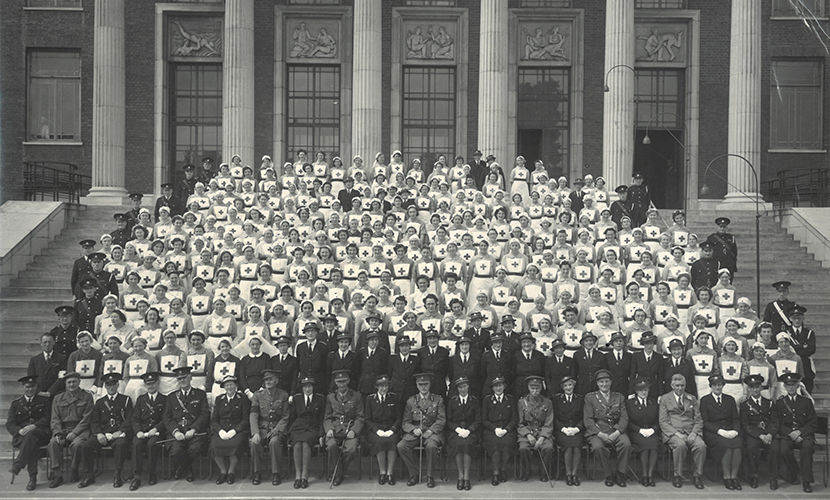
The Women’s Detachment not only provided direct aid to the community but became a training group in their own right. Overseen by Mrs Petigree the detachment delivered first aid instruction to youth groups and factory workers. Further work included the care of servicemen discharged from the military on medical grounds and returning prisoners of war.[3]
The Men’s Detachment often worked in co-operation with the women on many services, however, they also provided specific duties such as dealing with accidents at fetes, processions, football matches and other gatherings. Many men volunteered to be stretcher bearers to meet emergency hospital trains, helped in local hospitals and aided Air Raid Precautions.
Shortly after the first servicemen arrived for training in 1939 a College Sick Bay was established in the basement (now the ground floor) of the College. This was overseen by Mrs Brazier and Nurse Bowers who was replaced a few months later by Nurse Dawson. The number of patients treated in the College Sick Bay from January 1940 to January 1946 was 19,822, of which 16,907 were members of the armed forces.[3] Mr W. R. Bray paid tribute to Nurse Dawson ‘for her ever cheerful personality and her never stinted help to those in need.’ Nurse Dawson was presented with the British Red Cross Medal in 1943 by the Duchess of Gloucester for saving of life by the ‘prompt rendering of First Aid’.
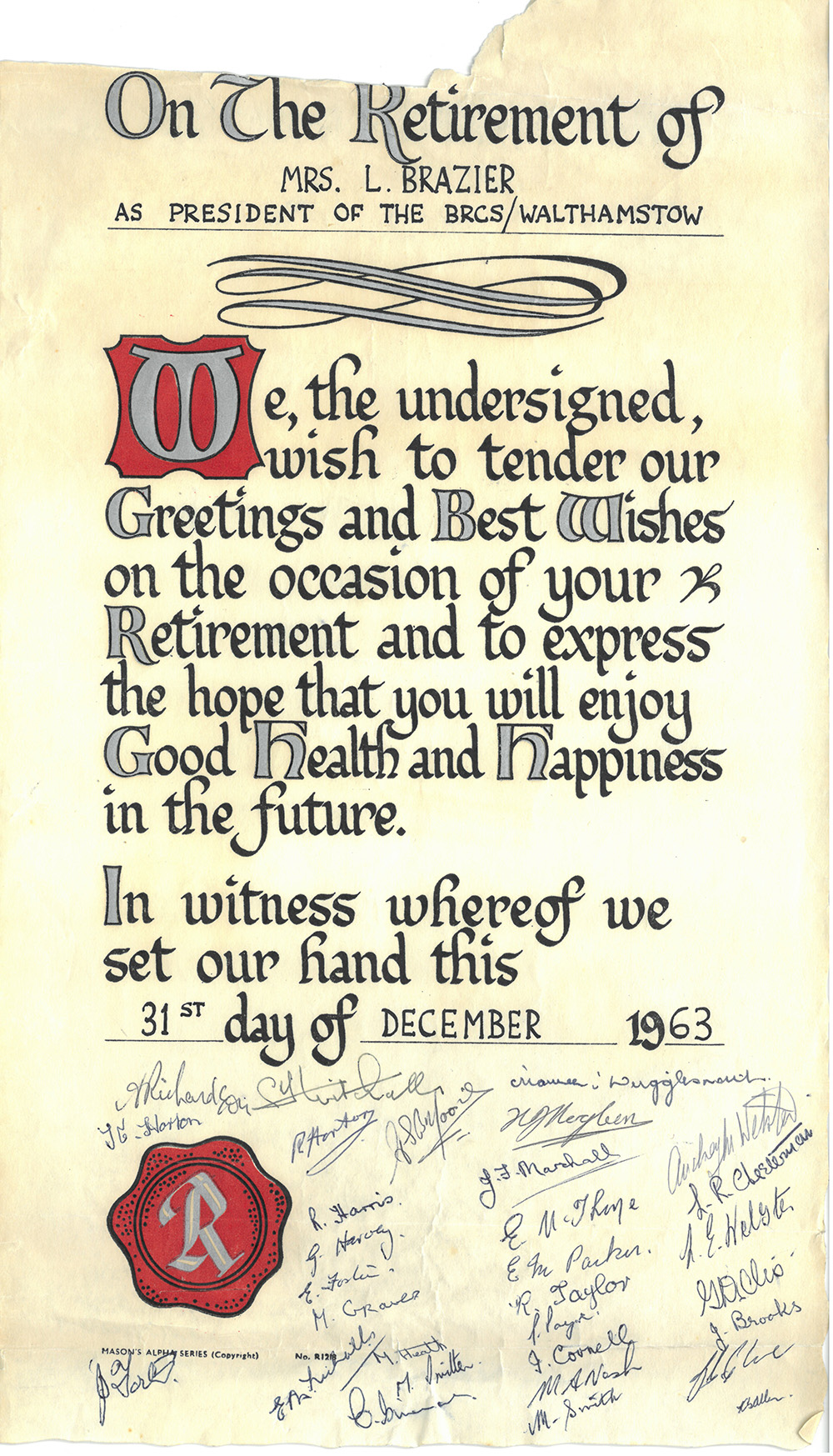
On several occasions the College hosted Red Cross Detachments from the South-West Essex region to participate in rallies and visits. A notable occasion was 24th June 1945 when the detachments were reviewed by Colonel Sir Francis Whitmore, K.C.B., C.M.G., D.S.O., T.D., Lord-Lieutenant of the County, and Lady Whitmore, President of the Essex Branch of the British Red Cross Society.[4]
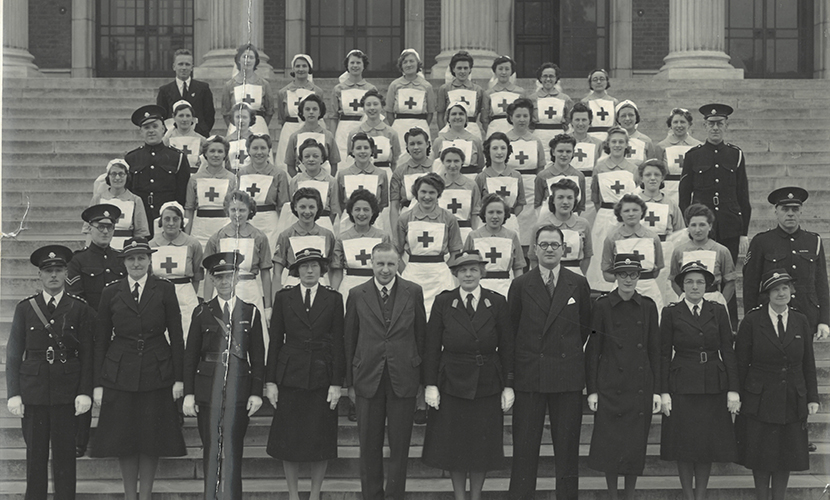
The work of the College’s detachments and their leaders was recognised on at least three occasions. The first such occasion was when Mrs Brazier (who had taken over leadership of the Women’s Detachment and later became a Divisional Secretary) was invited to 10 Downing Street to have tea with Mrs Churchill. Secondly, in early 1946, Mrs Brazier was awarded the Distinguished War Service Certificate of the BRCS. She attended a ceremony in Buckingham Palace at which she was presented the certificate by Her Majesty the Queen (the Queen Mother). Thirdly, the Men’s Detachment work was recognised when the Commandant was invited to be a Guard of Honour for the Princess Royal on the occasion of the Annual Service of the British Red Cross at Westminster Abbey in early 1946.[3]
In the 1944-1945 report the College Detachments ‘expressed to the Governing Body their appreciation of the facilities they have continued to enjoy in the College in connexion with all their activities, and which have helped so much to maintain the good standard of training and efficiency.’[4]
References
British Red Cross, “The beginning of the Red Cross,” [Online]. Available: https://www.redcross.org.uk/about-us/our-history/the-beginning-of-the-red-cross. [Accessed 28 December 2020].
H. Lowery, “South-West Essex Technical College and School of Art Annual Report Session 1940-41,” The Guardian Press, London, 1941.
W. R. Bray, The Country Should be Grateful - The War-time History of the South-West Essex Technical College and School of Art, London: The Walthamstow Press Ltd, 1947.
H. Lowery, “South-West Essex Technical College and School of Art Annual Report Session 1944-45,” The Guardian Press, London, 1945.
Researched and written by Thomas Barden

